Top Horseback Riding Tours in Punta Cana
Get in Touch with Our Team!
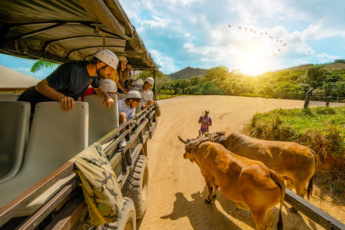
La Hacienda Park – 7-in-1 Adventures Tour in Bávaro, Punta Cana
from $99 View Details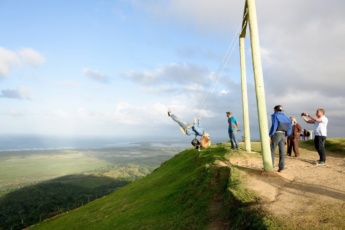
Montaña Redonda Private Tour from Punta Cana – With Beach Horseback Riding and El Limon Beach Stop
from $320 View Details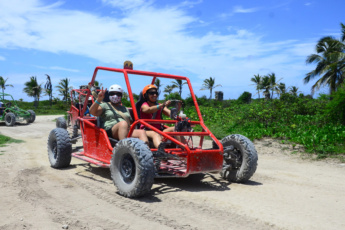
Best Buggy Tour with Zip Line & Horse Ride at Bávaro Adventure Park, Punta Cana
from $169 View Details
Montaña Redonda & Horseback Riding 2-in-1 Private Tour – from Punta Cana, 2025
from $165 View Details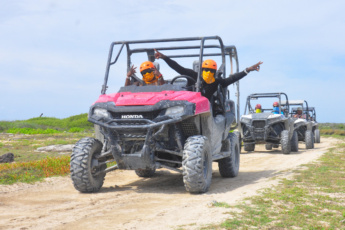
Best Polaris Off-Road Driving Tour with Zip Line & Horse Ride at Bávaro Adventure Park
from $199 View Details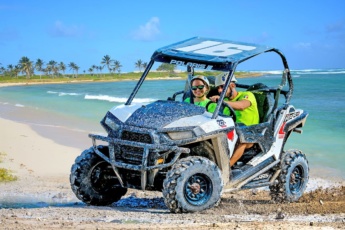
VIP Polaris Ride Combo Tour with Horseback Riding at Bávaro Adventure Park, Punta Cana
from $169 View Details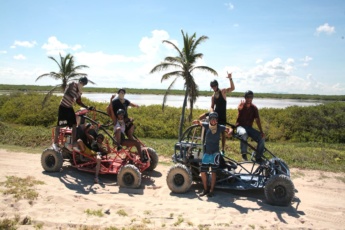
Adventure Buggy Combo Tour with Horseback Riding – Bávaro Adventure Park, Punta Cana
from $139 View Details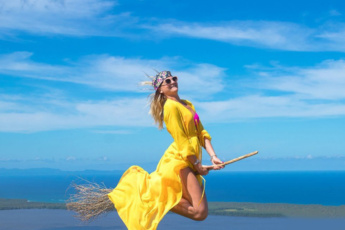
Montaña Redonda Private Combo Tour – With ATV and El Limon Beach Horseback Ride
from $420 View Details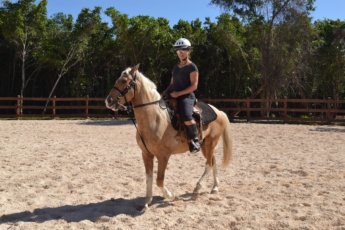
Countryside Horseback Riding at Scape Park in Cap Cana
from $89 View Details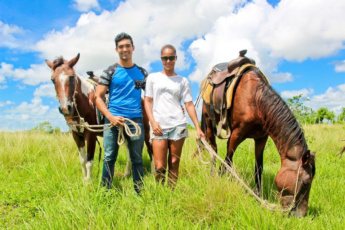
Punta Cana Horseback Riding – 4-HR Tour through Tropical Forests with Lunch
from $109 View Details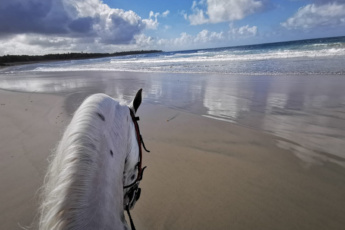
Beach Horseback Riding from Punta Cana – 4-Hour Tour to La Sabana de Nisibon and Playa El Limón
from $129 View DetailsThe best Punta Cana horseback riding tours
Enjoy the relaxing atmosphere of this beautiful country, the Dominican Republic! You can take a horseback ride along the beaches of Punta Cana and Bavaro while listening to the melodic sounds of the waves and breathing in the fresh breeze. In addition, you'll enjoy the beautiful landscapes where the freshness of nature will capture your attention.
A horseback riding tour in Punta Cana on the beach will give you an excellent opportunity to experience nature while riding on the stunning beach. Come and experience the joy of horseback riding in the Dominican Republic. All the necessary equipment included!
An amazing ecological adventure tour in Punta Cana that includes horseback riding, cocoa and cigar demonstrations, culture, dancing, swimming and lots of fun. These adventures provide you with well trained and well cared for horses and friendly bilingual guides to make your horseback riding the highlight of your Punta Cana vacation.
Main points to know about horseback riding in the Dominican Republic
No matter where you travel in the Dominican Republic, horseback riding tours can be found everywhere. This form of transportation has been inherent to the country's culture since Spanish times. Therefore, ranches are found both along the sea and in the central part of the country.
White sand beaches, coconut trees and turquoise water, all this can be seen if you choose coastal cities. In Punta Cana, Puerto Plata, Bayahibe and the capital Santo Domingo, you can find day and sunset excursions. Samana's palm-fringed beaches in winter attract humpback whales, so there is a great chance of spotting them during their mating season. The waterfalls of Limon Waterfall and Redonda Mountain are another sight to see while in the Samana region.
For mountain views, choose Jarabacoa as your destination. The valleys and towns of Cordillera Central region are also a good choice. However, сonsider that the interior is much cooler than the sea line.
Horseback riding is available all year round, but for long riding, choose the dry season. December to April is the period when there is the least chance of getting soaked by rain. Sunscreen and a hat, as well as layered clothing, are a must during that trip.
Tour itinerary of Punta Cana horseback riding
The fun begins as soon as you are picked up from your resort. Our entertaining guides will have you laughing as they tell you all about the incredible scenery you are traveling through. Learn about the culture, schools, entertainment and life in general.
After your arrival, you will receive a brief orientation and safety overview. Then it will be time to leave the facility on a healthy horse with a blue sky over your head. There you can gallop, get in your horse's water or just spend the whole time listening to the sounds of nature and relaxing before returning to the starting point.
Live the dream of horseback riding along the tropical white sand beaches on this day trip with beautiful scenery, friendly guides and amazing horses make this trip an unforgettable day. Designed for all ages and experience levels, this fun horseback riding adventure is perfect for the whole family.
Why not miss horseback riding tours in the Dominican Republic
Getting to know part of the Dominican Republic on horseback is something unique. First of all, because of the landscapes you will visit during our excursion. Secondly, because you will be able to acquire a new skill, since you will train horseback riding for several hours.
- Crystal-clear Caribbean water on one side. Tropical landscape on the other. Underneath, the sand, which you will ride with your horse on one of the most paradisiacal beaches of Punta Cana.
- And the best is yet to come. You will guided through the Dominican countryside, an experience that will allow you to contemplate its wild flora and fauna from another point of view.
Thanks to the expert riders of this activity, you will learn all aspects of a horse, from how it acts to how to trot or gallop. The ride will also be engraved in your retina. In addition, if you choose the last turn, you can contemplate the fabulous sunset over the Caribbean Sea!
As a conclusion
Horseback riding in Punta Cana really worth it. Simply sit back and relax on your horse and explore some hidden landscapes. Here you will experience the Dominican countryside landscape with its breathtaking mountains, rivers, pristine beaches and more. The wind will whip through your hair as your horse gains speed while gazing out over the endless ocean. You can even ride in the water, horses love it!
We promise that you will have a long and enjoyable ride. Throughout the ride, experienced guides will take care of you and share their knowledge of the Dominican Republic, its culture, and more. They will take care of you and make you have an unforgettable time!
Frequently asked questions about
horseback riding in Punta Cana
1. Can you ride horses in the Dominican Republic?
Yes, horseback riding is a popular activity in the Dominican Republic. Many tour operators and ranches offer horseback riding excursions for tourists to explore the country’s beautiful landscapes. You can find horseback riding opportunities in various regions, including beach rides, mountain trails, and countryside tours. The experience allows you to enjoy the natural beauty of the Dominican Republic while experiencing the unique thrill of horseback riding.
2. What do you wear to horseback riding in Punta Cana?
Wear comfortable and appropriate clothing When riding horseback in Punta Cana or any similar tropical location. Here are some recommendations:
- Wear long pants or jeans to protect your legs from chafing against the saddle and to guard against potential scratches or irritation from vegetation along the trail.
- Choose sturdy, closed-toe shoes with a small heel. This helps prevent your foot from slipping through the stirrup and provides better support while riding. Avoid wearing sandals or open-toe shoes.
- Sun protection is crucial. Wear a wide-brimmed hat to shield your face and neck, and apply sunscreen to exposed skin. Sunglasses can also be helpful.
- Wear a comfortable, breathable top suitable for the weather. T-shirts or lightweight, long-sleeved shirts are often good choices.
- In tropical areas, mosquitoes and other insects can be present. Applying bug repellent can help protect you from bites.
- Depending on the season, there might be a chance of rain. If so, bring a lightweight, waterproof jacket or poncho just in case.
- Some riders prefer wearing gloves to protect their hands from blisters, especially during longer rides. This is optional, and not everyone finds it necessary.
Always check any additional recommendations or requirements. Some tours might provide helmets or other gear, so it’s a good idea to inquire about what is included in the tour package.
3. Should I wear jeans or shorts horseback riding in Punta Cana?
It’s generally recommended to wear long pants or jeans when horseback riding in Punta Cana or any similar location. Here are a few reasons why:
- Long pants help protect your legs from chafing against the saddle. The constant rubbing of your legs against the saddle can cause discomfort, and long pants provide a barrier to minimize this.
- When riding through trails or areas with vegetation, your legs may come into contact with branches or plants that could cause scratches or irritation. Long pants offer additional protection.
- Long pants also provide better protection from the sun, preventing sunburn on your legs. This is especially important in tropical climates where the sun can be intense.
While shorts may be more comfortable in hot weather, they might expose your legs to potential discomfort and hazards during horseback riding. If you’re concerned about the heat, choose lightweight, breathable long pants or riding tights. Additionally, consider the ride’s length and the trail’s specific conditions.
4. What time of year is best for horseback riding in Punta Cana?
The best time for horseback riding in Punta Cana, as well as in the Dominican Republic in general, is during the dry season when the weather is more favorable for outdoor activities. The dry season typically runs from December to April. Here are some considerations for each season:
- December to April. This is the most favorable time for horseback riding. The weather is drier with lower rain chances, and temperatures are more moderate. The dry season coincides with the winter months in the Northern Hemisphere, making it a popular time for tourists to visit Punta Cana.
- May to November. The wet season in Punta Cana is characterized by higher humidity and a greater chance of rain. While the rain showers are often short-lived, the trails can become muddy, and there’s a higher likelihood of encountering rain during your horseback riding excursion.
The weather patterns can vary, and unexpected rain showers can occur even during the dry season. Additionally, temperatures in Punta Cana remain relatively warm all the year.
5. Can you ride horses on the beach in the Dominican Republic?
Yes, horseback riding on the beach is popular in the Dominican Republic, including areas like Punta Cana. Riding horses here often includes trotting along the shoreline, enjoying the ocean breeze, and taking in breathtaking views. It’s a memorable experience that combines the pleasure of horseback riding with the natural beauty of the beach environment.
If you’re interested in this activity, you can check our different tours in Punta Cana, which include horseback riding and other adventures you will definitely enjoy!
6. Can you wear jeans for horse riding in the Dominican Republic?
Yes, wearing jeans for horseback riding is a good choice. Jeans protect your legs, helping to prevent chafing and irritation from the saddle and offering some defense against scratches if you’re riding through areas with vegetation. Additionally, jeans can provide insulation and protection from the sun.
Wear lightweight and breathable jeans to stay comfortable if the weather is hot. Remember to wear closed-toe shoes with a small heel, and bring a hat, sunscreen, and other accessories for sun protection.
7. Can you wear sandals for horseback riding?
It’s not recommended to wear sandals for horseback riding. It can be risky because they expose your feet and toes, making them more susceptible to injury from the stirrup, branches, rocks, or other potential hazards along the trail. Additionally, open-toed shoes do not offer the same level of grip and support as closed shoes, which is crucial when riding a horse.
The ideal footwear for horseback riding includes closed-toe shoes with a small heel. This shoe helps prevent your foot from slipping through the stirrup and provides better stability and control while riding. Boots or shoes with a closed heel are commonly recommended for this activity.
8. How do I prepare for horseback riding?
Preparing for horseback riding involves several considerations to ensure a safe and enjoyable experience. Here are some steps to help you get ready:
- Wear long pants or jeans to protect your legs from chafing against the saddle and potential scratches from vegetation.
- Choose sturdy, closed-toe shoes with a small heel to prevent your foot from slipping through the stirrup and to provide better support.
- Check the weather forecast and dress accordingly. Bring a jacket or rain gear if needed.
- Wear a wide-brimmed hat to shield your face and neck from the sun. Apply sunscreen to exposed skin to protect against sunburn.
- Apply insect repellent to guard against mosquitoes and other insects, especially if riding in wooded areas.
- If the horseback riding tour operator doesn’t provide one, consider bringing your own certified riding helmet for safety.
- Listen carefully to the instructions given by the guide or instructor. They will provide information on how to mount and dismount, control the horse, and stay safe during the ride.
- Don’t hesitate to ask questions if you’re a beginner or have any concerns. The guides are there to ensure your safety and enjoyment.
- Inform the tour operator about any health conditions, allergies, or physical limitations you may have that could affect your ability to ride.
- Bring a water bottle to stay hydrated, especially in warmer climates.
- Adhere to safety guidelines provided by the tour operator. This may include rules about maintaining a safe distance between horses, avoiding sudden movements, and following trail etiquette.
- Approach and interact with the horses calmly and gently. Follow the guidance of the tour guides regarding handling the horses.
- Finally, relax and enjoy the experience. Horseback riding can be a wonderful way to connect with nature and explore the surroundings.
Remember that preparation and safety are key to a positive horseback riding experience. Always follow the instructions of the tour guides and prioritize your safety and the well-being of the horses.
9. How much does a horse cost in the Dominican Republic?
The cost of horseback riding in the Dominican Republic can vary based on several factors, including the location, duration of the ride, and the specific services or amenities included in the tour. Usually, the price starts from $109 US dollars for a 4-hour ride. On our website you can find more options for your adventures in the Dominican Republic.
10. Is it possible to spot whales during a horseback riding tour in Samana?
The coastal town of Samaná is a well-known place for whale watching and has stunning beaches perfect for horseback riding tours. Humpback whales migrate to this area during the winter months, from January to March, and this is the time to see them. Consider combining whale watching with exploring the stunning coastline during a horseback ride. This way, visitors can enjoy a double experience in the Dominican Republic at the same time.
11. What kind of horses are in the Dominican Republic?
In the Dominican Republic, various breeds and types of horses reflect a diverse equestrian landscape. Some of the common horse breeds and types are:
- The Criollo is a hardy and adaptable breed well-suited to tropical climates. They are known for their endurance and are often used for various purposes, including trail riding and farm work.
- The Paso Fino is a gaited horse breed known for its smooth and comfortable gaits. This breed is popular for pleasure riding and is often used in equestrian shows and competitions.
- Dominican Republic Creole Horse is a local breed that has adapted to the specific environmental conditions of the DR. These horses are versatile and used for various purposes, including farm work and recreational riding.
- Thoroughbreds, known for their speed and athleticism, can also be found in the Dominican Republic. They are often used in horse racing and other sports.
- Quarter Horses, known for their strength and agility, may be present in the Dominican Republic. They are versatile and can be used for various activities, including ranch work and Western-style riding.
- Given the diverse uses of horses in the Dominican Republic, you may also encounter crossbreeds that combine the characteristics of different breeds to meet specific needs.
When participating in horseback riding activities or exploring equestrian offerings in the Dominican Republic, you may encounter a mix of local breeds and those commonly used in various equestrian disciplines.



